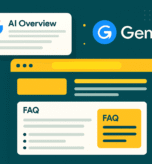Introduction
Creating SEO-friendly blog content in 2025 is more than just adding the right keywords; it’s about understanding your readers and how search engines think. As search algorithms become smarter with the help of AI, good content needs to be clear, helpful, and structured well.
If you want your blog to show up on Google and other search platforms, you must follow a smart blog content strategy. That includes writing for your audience, using the right keywords, and organizing your content in a way that’s easy to read. In 2025, SEO is not just about rankings, it’s about delivering real value and building trust online.
1.Understand Your Audience First
Before you write any blog post, it’s important to know who your audience is and what they are searching for. This is the first and most important step in creating SEO-friendly content.
- Focus on Search Intent
Search intent means the reason behind a person’s search. Are they looking for information, a specific website, or planning to buy something? There are three main types:
- Informational: The user wants to learn something.
Example: “How to improve website speed” - Navigational: The user wants to go to a specific site or page.
Example: “SEMrush login” - Transactional: The user wants to make a purchase or take action.
Example: “Buy SEO tool subscription”
Knowing the right search intent helps you write content that matches what users actually need. Google rewards pages that match the intent correctly.
- Do Proper Audience Research
Use tools like Semrush, Google Search Console, or AnswerThePublic to understand:
- What your audience is searching for
- The questions they ask
- The language they use
- What kind of content is already ranking
This step is called audience research, and it helps you build a strong SEO content strategy. When you create content that speaks directly to your target readers, you increase the chances of ranking higher and getting more traffic.
2.Do Smart Keyword Research
Keyword research is still one of the most important steps in writing SEO-friendly blog content, even in 2025. But how we do it has changed a lot over the years.
- Use Long-Tail Keywords
Today, it’s not just about targeting one or two popular words. Instead, focus on long-tail keywords; these are longer, more specific phrases that people actually search for.
Example: Instead of using just “SEO”, try something like “best SEO tools for beginners 2025” or “how to write SEO blog posts”.
Long-tail keywords often have less competition, but they bring in more qualified traffic. These users know what they want, and your content can give them exactly that.
- Think About Semantic Search
Search engines are smarter now. They don’t just look at exact keywords anymore. They understand semantic meaning which means they recognize related words and phrases.
For example, if your main keyword is “SEO content strategy”, Google also understands terms like “optimize blog posts,” “improve organic traffic,” or “ranking content on Google.”
So, when writing, don’t force keywords. Use natural language. Include related phrases that support your topic.
- Use Trusted SEO Tools
The right tools make keyword research easier. In 2025, some of the best SEO tools include:
- Semrush – For keyword ideas, volume, and difficulty
- Google Trends – To check what’s trending now
- Ubersuggest – For beginner-friendly suggestions and content ideas
These tools help you find keywords that have both high search potential and relevance to your audience.
3. Craft Strong, Click-Worthy Headlines
Your blog title is the first thing people see and it’s also what shows up in Google search. So if you want more clicks and better rankings, writing a strong SEO title is a must in 2025.
- Keep It Short and Clear
Make sure your headline is under 60 characters. Short titles look better in search results and are easier to read. Avoid using complex words or anything that confuses the reader.
Good example:
“Easy Tips to Write SEO-Friendly Blogs in 2025”
Bad example:
“Unlocking the Infinite Potential of Semantic Web-Based Optimization”
The second one may sound fancy, but most people will scroll past it.
- Add Your Main Keyword
Always include your primary keyword in the title. This helps with blog headline optimization and also shows search engines what your content is about.
For example, if your keyword is “SEO-friendly blog content”, a good title could be:
“How to Write SEO-Friendly Blog Content in 2025”
Make It Interesting
Don’t just write a plain title. Use words that catch attention like Easy, Best, Guide, Tips, Proven, or In 2025 adding the year makes it feel fresh and relevant.
C. Use Tools that Help You
If you’re unsure about your title, use tools like:
- CoSchedule Headline Analyzer – Scores your headline for clarity and power
- ChatGPT – Ask for a few variations to see what sounds best
- Semrush’s SEO Writing Assistant – Checks if your headline fits your target keyword
4. Write Helpful, Clear & Well-Structured Content
In 2025, search engines like Google focus more on user-first content than ever before. That means your blog should not only target on-page SEO, but also deliver clear answers and real value to readers.
- Focus on Clarity and Value
Write content that solves problems or gives useful information. Ask yourself: “Will this help the reader?” If yes, you’re on the right track.
Keep your language simple and direct. Avoid technical jargon unless your audience expects it. This helps make your content more accessible to everyone, which improves SEO blog writing performance.
- Use Headings and Bullet Points
Break your blog into clear sections using H2 and H3 subheadings. This makes it easier for readers to scan and helps search engines understand your content.
Also, use bullet points or numbered lists wherever possible. It improves readability and keeps your content organized.
- Add Internal and External Links
Linking to other helpful blog posts on your site (internal links) supports your on-page SEO. It helps search engines crawl your site better and keeps readers engaged.
At the same time, include links to trusted external sources (like government sites or respected blogs). This builds credibility and improves your content’s authority.
5. Optimize Meta Title and Meta Description
Meta titles and meta descriptions may seem small, but they play a big role in your blog’s performance on search engines.
What is a Meta Title?
A meta title is the blue clickable headline you see in Google search results. It should clearly tell what your blog is about and include your primary keyword naturally.
- Keep it between 50–60 characters and make it interesting enough to encourage users to click.
Example:
How to Create SEO-Friendly Blog Content in 2025
What is a Meta Description?
A meta description is the short summary that appears below your title in search results. It should give a quick overview of your blog and make people want to read more.
- Keep it within 150–160 characters, and try to include your primary keyword and one supporting keyword if possible.
Why It Matters
A strong meta title and description help improve your click-through rate (CTR) which tells search engines that people find your content useful. This can boost your rankings over time.
Also, make sure your metadata accurately reflects what your page is about. If you’re still wondering how older practices fit into modern SEO, check out our guide on What Are Meta Keywords? Do They Still Matter Today? to understand their current role in content optimization.
6. Use Images and Optimize Them
Images make your blog easier to read and more interesting for users. But just adding pictures is not enough; they need to be optimized properly for SEO.
- Add Relevant or Original Images
Use high-quality images that support your content. You can add screenshots, infographics, or even custom designs. This helps break up long text and keeps readers engaged.
- Compress for Faster Load Time
Large image files can slow down your website. Compress all images before uploading them. A faster website means a better user experience and better rankings in Google.
- Write Descriptive Alt Text
Every image should include alt text — a short description of the image. Use keywords in the alt text if it makes sense, but avoid stuffing. This helps with image SEO and also makes your blog more accessible for users who use screen readers.
Example:
If your blog is about writing SEO content, and you add an infographic showing the blog structure, a good alt text could be:
“Infographic showing SEO-friendly blog structure with headings, keywords, and internal links.”
By using optimized visuals with meaningful alt tags, you improve both user experience and search visibility.
7. Add Internal and External Links
Why Internal Linking Matters?
Internal links connect your blog post to other relevant pages on your website. This helps search engines understand your website structure and keeps users engaged longer by guiding them to more helpful content.
Benefits of internal linking:
- Improves site structure
- Distributes page authority
- Keeps visitors on your site longer
- Helps Google crawl your website better
The Role of External Links
Linking to high-authority external sources shows search engines that you’ve done proper research. It builds trust and improves credibility with your readers.
Example: When citing data or studies, link to trusted sources like Google Search Central or industry experts like Semrush.
Best Practices:
- Use relevant anchor text for all links
- Don’t overlink – only add links where they’re truly helpful
- Make sure links open in a new tab (for better user experience)
- Regularly update broken or outdated links
Using a strong link strategy improves your overall SEO, boosts user experience, and shows that your content is valuable and well-connected.
8. Focus on Readability and Mobile Experience
Creating SEO-friendly content in 2025 is not just about keywords. It’s also about how easy your blog is to read and navigate, especially on mobile.
Why Readability Matters
Search engines now care more about user experience. If your content is hard to understand or looks messy, people will leave your page quickly. This can hurt your rankings.
- Use short sentences and simple words
- Break your text into small paragraphs
- Add bullet points and subheadings
- Avoid jargon or overly technical terms
Tools like Hemingway Editor and Grammarly can help make your writing more clear and reader-friendly.
Don’t Ignore Mobile SEO
More people read blogs on their phones today than ever before. So, mobile SEO is critical. Your blog must be easy to read and quick to load on all screen sizes.
- Use a mobile-responsive theme
- Keep fonts and buttons easy to tap
- Avoid large images or slow-loading files
- Test your blog using Google’s Mobile-Friendly Test
When you focus on both readability and mobile experience, your blog becomes more engaging for readers, and more visible to search engines. This supports better UX for SEO, which is a growing ranking factor in 2025.
9. Update Old Content Regularly
Publishing a blog is not a one-time task. If you want your content to stay relevant and rank well in 2025, you need to update old content regularly.
Why Content Updates Matter?
Search engines prefer fresh and evergreen content. Even if your blog was once ranking high, it may drop if it becomes outdated. Regular updates show that your website is active and well-maintained, a key signal for SEO maintenance.
How to Refresh Old Blogs:
- Add new data or insights from the current year
- Replace outdated keywords with newer, high-volume keywords
- Fix broken links or update internal links
- Improve the formatting or readability
- Add new visuals or examples to support the content
Keep Your Evergreen Content Alive
Some content is designed to last like how-to guides or tutorials. But even evergreen content needs minor updates to stay useful. Add recent stats, adjust examples, or align with algorithm changes to keep it strong. Regular content updates help drive more traffic, improve user experience, and make your blog more trustworthy to search engines.




